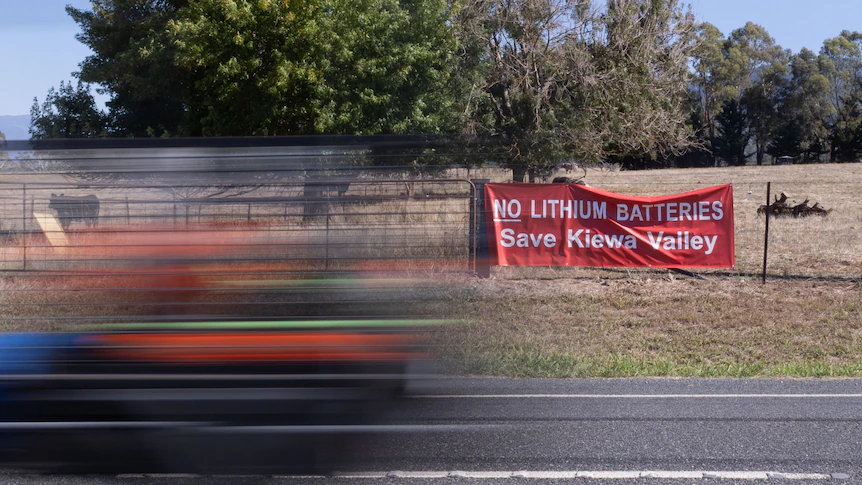Finance, Economy & Tradewith Richmond Kwame Frimpong: Redefining country economic zone policies: From tax havens to sustainable growth poles
By Francis
Copyright thebftonline

Economic zones have long been viewed as instrumental in driving manufacturing competitiveness, catalyzing industrialization, fostering trade and investment, especially in emerging markets.
Traditionally, Economic Zones are synonymous with tax havens, offering businesses the allure of minimal taxation and regulatory oversight. However, as the global economic landscape evolves and environmental sustainability becomes a paramount concern, there is an urgent need to redefine the purpose and functionality of these zones through national policy designs.
Special economic zones have long been lauded for their ability to stimulate economic growth, nature innovation and create sustainably inclusive jobs that drive economic growth. Countries like China and India have successfully utilized SEZs to attract FDI, contributing significantly to their economic landscapes.
For instance, China’s establishment of SEZs in the 1980s, particularly in cities like Shenzhen, catalyzed its transformation into the world’s second-largest economy, boasting a GDP growth rate averaging around 10% during that period. According to the World Bank, as of 2021, there were over 5,000 SEZs globally, employing millions and generating significant economic output.
However, the focus on tax advantages and regulatory leniency has often led to criticisms regarding labor rights, environmental degradation, and social inequality. Many SEZs have been criticized for creating “race-to-the-bottom” scenarios, where countries compete to offer the lowest standards for labor and environmental protections to attract investors. This has raised concerns about the long-term sustainability of such economic models, prompting a need for a paradigm shift.
The Need for Country Policy Redesign
The imperative to transition from tax havens to sustainable growth hubs is underscored by the global recognition of climate change and the pressing need to achieve the SDGs by 2030.
The United Nations Conference on Trade and Development (UNCTAD) emphasizes that sustainable development requires a shift in the economic paradigm, focusing on inclusive growth, social equity, and environmental sustainability. This shift is especially relevant in Africa, where economic zones can play a pivotal role in fostering sustainable development amid challenges such as poverty, unemployment, and environmental degradation.
According to the African Development Bank (AfDB), Africa’s population is projected to reach 2.5 billion by 2050, with a significant proportion comprising young people seeking employment. The need for job creation, combined with the urgency of addressing climate change, necessitates a rethinking of economic zones. By embedding sustainability into the operational framework of these zones, countries can create a conducive environment for innovation, entrepreneurship, and sustainable economic activities.
Defining Sustainable Growth Poles
Sustainable growth goes beyond tax incentives; they encompass a holistic approach that integrates environmental, social and governance (ESG) principles into economic development. Growth hubs prioritize green technologies, skills development, renewable energy and sustainable practices while fostering an inclusive business environment. Key elements of sustainable growth hubs include:
Environmental Sustainability: Sustainable growth hubs should promote practices that minimize ecological footprints, such as the use of renewable energy sources, waste reduction, and sustainable supply chain management. For instance, the Eco-Industrial Park (EIP) model encourages businesses to collaborate on resource efficiency, sharing energy and materials to reduce waste and enhance productivity.
Social Inclusivity: Economic zones must address social inequalities by creating opportunities for marginalized communities, women, and youth. This can be achieved through targeted skills development programs, access to finance, and support for small and medium-sized enterprises (SMEs). Research by the World Bank indicates that SMEs are crucial for job creation in developing economies, and empowering these businesses within economic zones can drive inclusive growth.
Innovation and Technology: Sustainable growth hubs should foster innovation through the promotion of research and development (R&D), technological advancement, and digital transformation. Establishing innovation clusters within economic zones can attract high-tech industries and skilled labor, driving economic diversification and resilience.
Job creation opportunities
The Meridian Industrial Park demonstrates how sustainable growth hubs can foster innovation and collaboration among industries while promoting environmental sustainability. By incorporating renewable energy sources and sustainable supply chain practices, Meridian not only reduces its ecological footprint but also enhances the productivity and resilience of its tenant businesses.
The Shift Towards Sustainability
The pressing challenges of climate change, resource depletion, and social inequality are increasingly influencing the evolution of economic policies worldwide. In light of these challenges, there is a growing recognition of the need for sustainable development, prompting a shift in how SEZs operate.
Sustainable economic zones (SEZs) are emerging as a solution, focusing not only on attracting investment but also on fostering environmentally friendly practices and social inclusivity.
The United Nations Sustainable Development Goals (SDGs) provide a framework for this transition, encouraging countries to pursue economic growth that aligns with social equity and environmental sustainability.
For instance, Goal 8 emphasizes the need for sustained economic growth, higher levels of productivity, and technological innovation, while Goal 12 advocates for sustainable consumption and production patterns. By integrating these principles into the design and management of SEZs, countries can create economic environments that benefit all stakeholders.
Case Studies of Sustainable Economic Zones
Several countries have begun to redefine their Special Economic Zones(SEZs) as sustainable growth hubs, providing models for others to follow. In Morocco, the Tanger Med Port and its associated SEZ have successfully integrated sustainability into their operations.
The zone is strategically positioned as a logistics and manufacturing hub, emphasizing renewable energy use and sustainable practices. According to the Moroccan Agency for Sustainable Energy, the zone aims to generate 42% of its energy from renewable sources by 2020, significantly reducing its carbon footprint.
Similarly, the Eco-City in Tianjin, China, exemplifies the potential of SEZs to foster sustainable development. This ambitious project is designed to be a low-carbon city, prioritizing green technologies and sustainable urban planning.
By focusing on clean energy, efficient resource management, and environmentally friendly transportation systems, the Eco-City serves as a blueprint for sustainable urban development. The Chinese government has committed significant resources to this initiative, with investments exceeding $5 billion aimed at attracting businesses that prioritize sustainability.
In Africa, the African Union’s Agenda 2063 emphasizes the need for inclusive and sustainable development, highlighting the potential of SEZs to contribute to this vision.
The Lekki Free Trade Zone in Nigeria, for instance, aims to promote economic diversification and create job opportunities while adhering to sustainable practices. By integrating local communities into the development process and focusing on environmental protection, the Lekki Zone seeks to establish a model for sustainable economic growth in the region.
Benefits of Transitioning to Sustainable Growth Hubs
The transition from tax havens to sustainable growth hubs offers numerous benefits, not only for host countries but also for global trade. Firstly, sustainable economic zones can enhance the reputation of countries on the international stage.
By committing to sustainable practices and responsible investment, nations can attract ethically conscious investors who prioritize environmental and social governance (ESG) criteria. This shift is evident in the increasing demand for sustainable investments, with the global sustainable investment market reaching $35.3 trillion in 2020, according to the Global Sustainable Investment Alliance.
Moreover, sustainable SEZs can foster innovation and technological advancement. By prioritizing green technologies and sustainable practices, these zones can become centers of innovation, attracting startups and research institutions focused on developing solutions to global challenges.
For instance, the Netherlands has successfully positioned itself as a leader in sustainable agriculture, with its Greenport Westland-Oostland SEZ serving as a hub for agritech innovation. By leveraging technology to enhance agricultural productivity while minimizing environmental impact, the zone exemplifies how sustainable practices can drive economic growth.
Additionally, the integration of sustainability into economic zones can enhance resilience against economic shocks, the vulnerabilities of global tariff wars and the need for diversified economies. By focusing on local production and sustainable practices, countries can reduce their reliance on external markets and enhance their economic resilience.
The United Nations Conference on Trade and Development (UNCTAD) estimates that transitioning to more sustainable production systems could create 85 million new jobs globally by 2030, highlighting the potential economic benefits of this approach.
Challenges to Overcome
Despite the promising potential of transitioning to sustainable growth hubs, several challenges must be addressed. The primary concern is the need for a shift in mindset among policymakers, investors, and businesses. Many stakeholders remain entrenched in traditional models that prioritize short-term gains over long-term sustainability. To overcome this resistance, it is crucial to raise awareness about the economic benefits of sustainable practices and the risks associated with maintaining the status quo.
Additionally, developing countries may face financial and technical constraints in implementing sustainable practices within their SEZs. Access to financing for green technologies and infrastructure development is essential to support this transition. International financial institutions, such as the World Bank and the African Development Bank, can play a vital role in providing funding and technical assistance to help countries develop sustainable economic zones.
Moreover, effective governance and regulatory frameworks are essential to ensure that sustainability standards are met. Governments must establish clear guidelines and performance metrics for SEZs, promoting transparency and accountability in their operations. By fostering a culture of compliance and encouraging stakeholder engagement, countries can create an environment conducive to sustainable growth.
Concluding Next Steps
As global challenges such as climate change and social inequality intensify, it is essential for countries to transform their Special Economic Zones (SEZs) into models of sustainability that prioritize environmental stewardship, social equity, and innovation. By integrating Environmental, Social, and Governance (ESG) principles into their operational frameworks, nations can create conducive environments that not only attract ethical investments but also drive job creation and economic diversification.
Case studies from around the world, including initiatives in East Africa and Southeast Asis, illustrate the potential of sustainable economic zones to generate substantial benefits while aligning with global sustainability goals. While challenges remain, including shifting mindsets and securing financial resources, the transition toward sustainable growth hubs holds the promise of a more equitable and prosperous future for all stakeholders involved.
The writer is an award-winning “growth and turnaround” business leader with nearly two decades of multi-industry expertise across Europe, the Middle East and Africa. Specialized in Upstream financial Advisory, International Trade & Development, Economic Integration & Digitalization, Industrial Ecosystems & Special Economic Zones.



